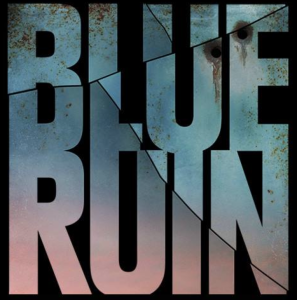Director Jeremy Saulnier put his economic life on the line to make Blue Ruin. Partly funded from Kickstarter and partly funded from the support of family and friends, Saulnier’s passion bleeds through every inch of the frame throughout his subversive revenge thriller.
Dwight, the main protagonist who is played with delicacy by Marcon Blair, is a modern day nomad, a cowboy with no home. His beach-bum lifestyle is disrupted when he learns that the man who killed his father is being released from prison. The revenge story begins here, and the manhunt does not give up its hold until the final scene, although the initial target is killed quite early in the film. The rest of the film touches on the family dynamics of both Dwight and the “victim,” warring factions going back and forth.
Sure, the plot on paper can seem a bit two-dimensional, but Blue Ruin constantly subverts audience expectations of a revenge drama. The leading man is neither a macho-Rambo style mercenary nor a handsome cowboy. Dwight makes mistake after mistake on the path for closure to his pain. His characterization is subtle, told through conversation with his estranged sister, to whom he flees after stumbling through his first murder and forgetting his keys at the scene of the crime. Dwight is a “lone ranger,” bumbling and weak.
The weakness in this relatively mysterious man is what breathes new life into the genre. Dwight barely knows how to shoot a gun, struggles to make kill shots and is persistently under confident in his violent tendencies. In the few murder scenes, the film hits you with an uppercut, shaking off suspense for gruesome violence. Blood spills out in a hauntingly realistic portrayal, Dwight’s aimlessness finds focus in the killing.
The minimal cinematography, with its lack of jump cuts, allows the audience to focus on Dwight’s eyes and the ethical conflicts he internally endures. One beautiful shot early in the film enhances the dark blue Virginia sky as Dwight walks the outskirts of a Virginia Beach boardwalk. The reflective, morose color signifying any semblance of joy Dwight may have experienced is far in the past from the movie’s start. Numerous subjective shots enter us into his head space and see the world through Dwight’s blurry anxiety, the most effective of which is the blurring of the frame when Dwight initially gets the news of his father’s killer, revealing his debilitating sadness and anxiety; this is character with a conscious engaging in violence as his only way to grieve, not for power or ego. Inversely, to match the bleak visual design, Blue Ruin borrows a bit from horror as well, with a sound mix that enhances footsteps, floorboard creaks and drone noises.
As a whole, Blue Ruin deals with the residual implications of violence and vengeance. Dwight, for appearing rather powerless, seems to surge with adrenaline with each man he conquers. In one particular scene, Dwight has captured a psychotic relative of the person who killed his father, and is keeping him in the truck of his car. When recounting the story of how Dwight lost his father, the man says “whoever has the gun gets to tell the truth.” This line points significantly towards the direct relationship between violence and power, or the powerless in Dwight’s circumstance.
Saulnier’s “hitchcockian” tendencies are scattered throughout; subjective cameras, minimal lighting and suspense over shock. His characters rarely speak, and when they do, their lines echo in our minds. Is Dwight justified in his violence? The film isn’t pressing morality, but laying it all out in gory detail. Instead, Blue Ruin is pressing the implications of what comes from taking an eye for an eye.
Blue Ruin is currently streaming on Netflix.


